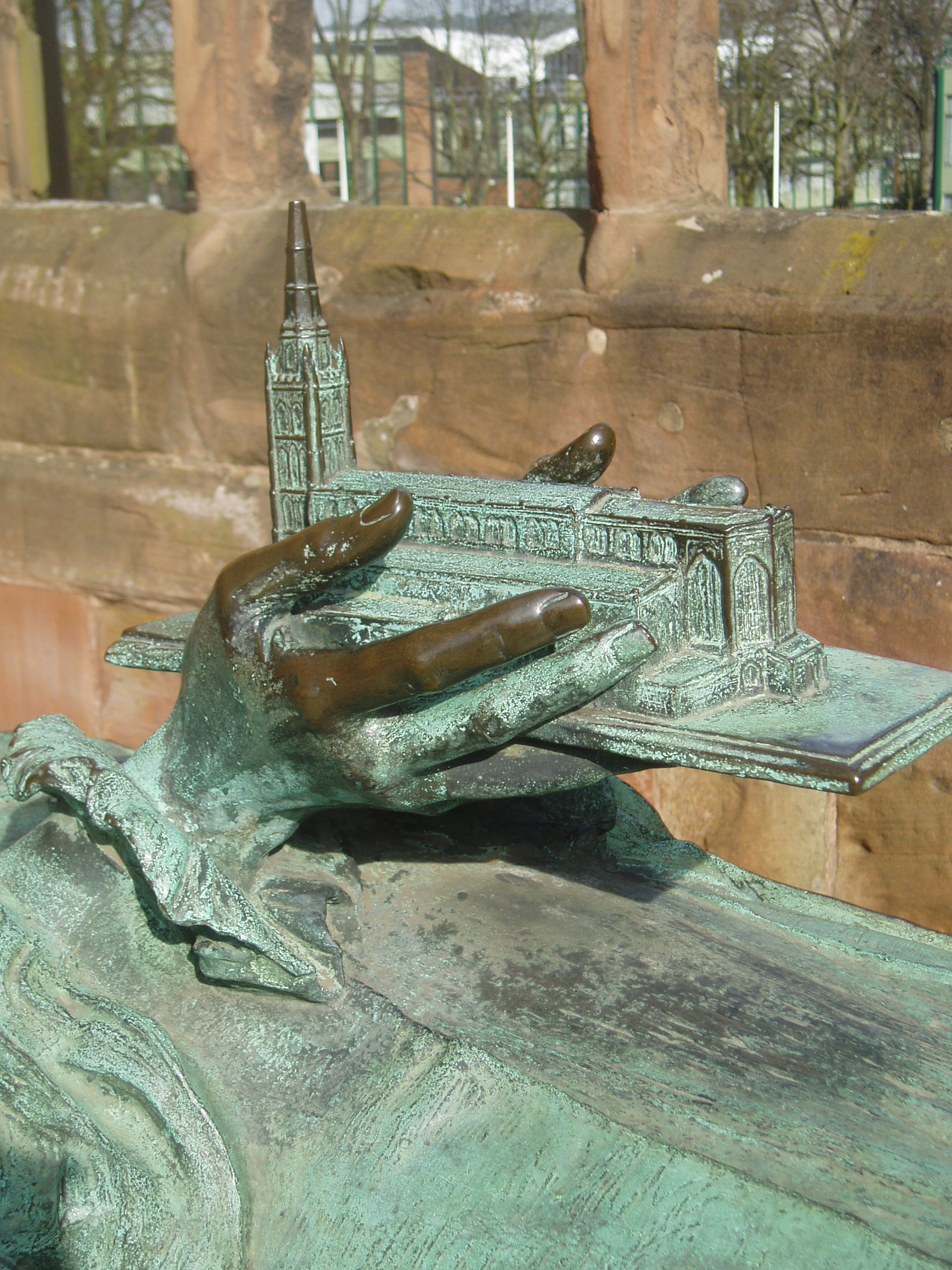Информация об изображении
Название: Old Coventry Cathedral in Miniature Detail of the memorial of Bishop Yeatman Biggs, first bishop of te newly refounded Diocese of Coventry (d.1922). The bronze effigy by Sir John Hamo Thornycroft was the only one of the old St Michael's many monuments to survive the bombing more or less intact. (It remains unclear what fragments survived in the debris of the important Tudor Nethermyll and Swillington tombs or what was done with them; old photos suggest something of the latter survived but no trace remains today). Coventry's Cathedral is a unique synthesis of old a new, born of wartime suffering and forged in the spirit of postwar optimism, famous for it's history and for being the most radically modern of Anglican cathedrals. Two cathedral's stand side by side, the ruins of the medieval building, destroyed by incendiary bombs in 1940 and the bold new building designed by Basil Spence and opened in 1962. It is a common misconception that Coventry lost it's first cathedral in the wartime blitz, but the bombs actually destroyed it's second; the original medieval cathedral was the monastic St Mary's, a large cruciform building believed to have been similar in appearance to Lichfield Cathedral (whose diocese it shared). Tragically it became the only English cathedral to be destroyed during the Reformation, after which it was quickly quarried away, leaving only scant fragments, but enough evidence survives to indicate it's rich decoration (some pieces displayed nearby in the Priory Visitors Centre). Foundations of it's apse were found during the building of the new cathedral in the 1950s, thus technically three cathedrals share the same site. The mainly 15th century St Michael's parish church became the seat of the new diocese of Coventry in 1918, and being one of the largest parish churches in the country it was upgraded to cathedral status without structural changes (unlike most 'parish church' cathedrals created in the early 20th century). It lasted in this role a mere 22 years before being burned to the ground in the 1940 Coventry Blitz, leaving only the outer walls and the magnificent tapering tower and spire (the extensive arcades and clerestoreys collapsed completely in the fire, precipitated by the roof reinforcement girders, installed in the Victorian restoration, that buckled in the intense heat). The determination to rebuild the cathedral in some form was born on the day of the bombing, however it wasn't until the mid 1950s that a competition was held and Sir Basil Spence's design was chosen. Spence had been so moved by experiencing the ruined church he resolved to retain it entirely to serve as a forecourt to the new church. He envisaged the two being linked by a glass screen wall so that the old church would be visible from within the new. Built between 1957-62 at a right-angle to the ruins, the new cathedral attracted controversy for it's modern form, and yet some modernists argued that it didn't go far enough, afterall there are echoes of the gothic style in the great stone-mullioned windows of the nave and the net vaulting (actually a free-standing canopy) within. What is exceptional is the way art has been used as such an integral part of the building, a watershed moment, revolutionising the concept of religious art in Britain. Spence employed some of the biggest names in contemporary art to contribute their vision to his; the exterior is adorned with Jacob Epstein's triumphant bronze figures of Archangel Michael (patron of the cathedral) vanquishing the Devil. At the entrance is the remarkable glass wall, engraved by John Hutton with strikingly stylised figures of saints and angels, and allowing the interior of the new to communicate with the ruin. Inside, the great tapestry of Christ in majesty surrounded by the evangelistic creatures, draws the eye beyond the high altar; it was designed by Graham Sutherland and was the largest tapestry ever made. However one of the greatest features of Coventry is it's wealth of modern stained glass, something Spence resolved to include having witnessed the bleakness of Chartres Cathedral in wartime, when all it's stained glass had been removed. The first window encountered on entering is the enormous 'chess-board' baptistry window filled with stunning abstract glass by John Piper & Patrick Reyntiens, a symphony of glowing colour. The staggered nave walls are illuminated by ten narrow floor to ceiling windows filled with semi-abstract symbolic designs arranged in pairs of dominant colours (green, red, multi-coloured, purple/blue and gold) representing the souls journey to maturity, and revealed gradually as one approaches the altar. This amazing project was the work of three designers lead by master glass artist LawrenceЗагружено: 22.02.2020 19:16
Просмотров: 13
Размер изображения: 1704×2272 пикселей
Камера: u20D,S400D,u400D
Изменение фото: 28.03.2011 17:16
ISO: 64
Фокусное расстояние: 8.8
Диафрагма: 3.6
Выдержка: 1/250
Вспышка: Использовалась
Программа: Microsoft Windows Photo Viewer 6.1.7600.16385
